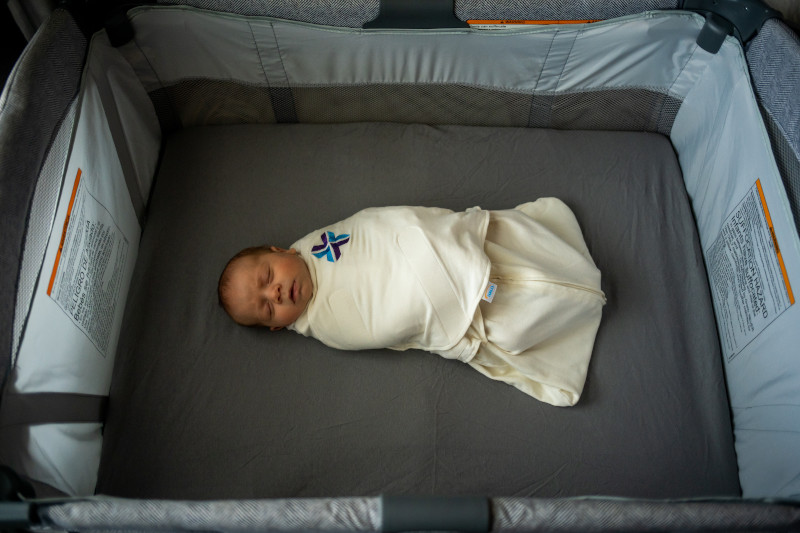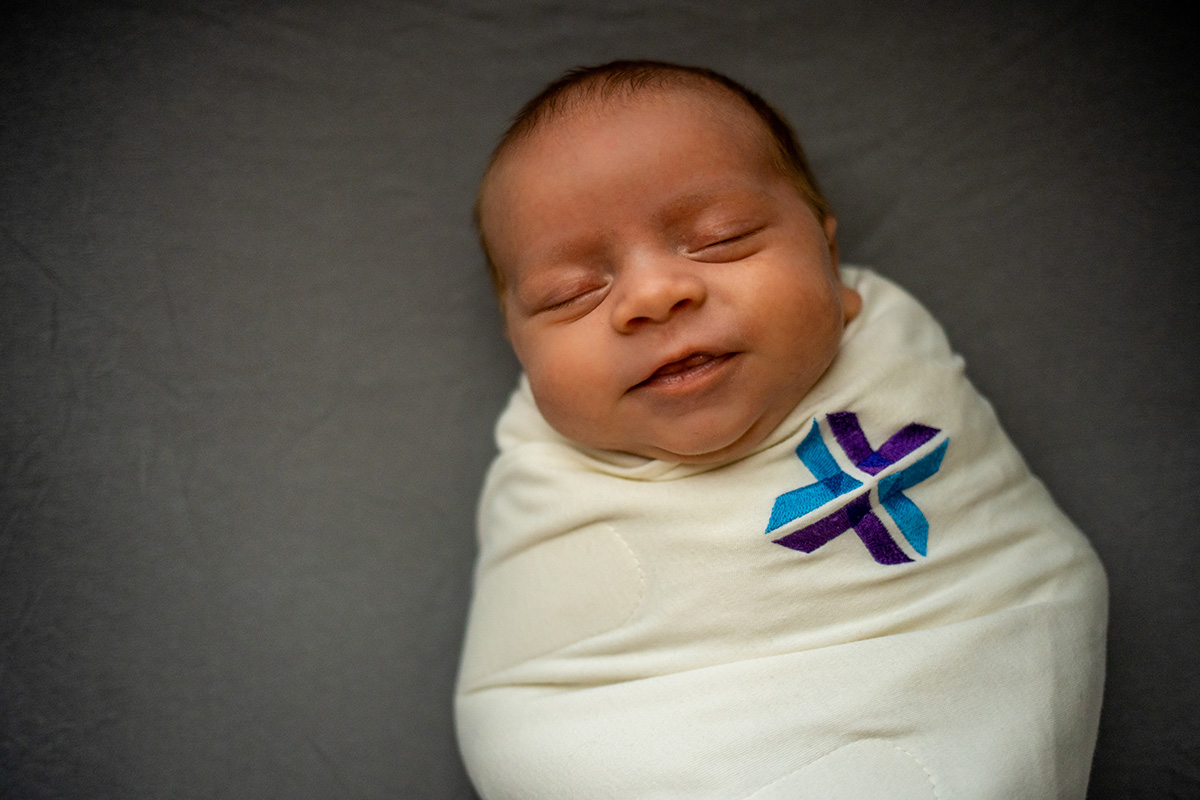
About
It’s natural to focus on (or obsess over) the topic of sleep when there’s a newborn in the house. You know sleep is important to their health and development. And, of course, you want them to sleep so you can catch up on your sleep too.
But did you know that how and where your baby sleeps is more important than when they sleep? Every year in the U.S., around 3,500 infants die from sleep-related causes.
Even though this statistic is alarming, many of these deaths are preventable. Decades of research have shown that parents who create a safe sleep environment significantly reduce their babies’ risk of death from sudden unexpected infant death. This is a broad term that includes sudden infant death syndrome (SIDS), accidental suffocation or strangulation and other trauma.
How to Help Your Baby Sleep Safely
Follow these five easy steps until your baby turns 1 year old:
- Always lay your baby to sleep on his or her back. Whether it’s naptime or bedtime, lay your baby on his or her back – never on the stomach or side. This is the single most important thing you can do to reduce the risk of SIDS. Babies who sleep on their stomachs may breathe in less oxygen and may be more likely to overheat. And infants placed on their side are more likely to roll onto their tummy while they’re sleeping.
- Lay baby on a firm, flat surface. Your baby should only sleep on a firm mattress that is covered with a tight-fitted sheet, inside a crib or bassinet. It’s tempting to let your little one sleep on the couch after a feeding. But cushions (and the gaps between them) pose suffocation risks. And whenever possible, avoid letting your baby sleep in his or her car seat, bouncer or swing. Young infants have weak neck muscles, causing their heads to fall forward during sleep and restrict their breathing.
- Don’t put anything in the crib or bassinet except your baby. Do not let your baby sleep with pillows, blankets, stuffed animals or bumper pads. Bedding and soft objects pose suffocation or strangulation risks, or may cause your baby to overheat. If you’re concerned that your child is cold, dress him or her in an extra layer of clothing or a sleep sack.
- Share your bedroom – NOT your bed. Doctors recommend babies sleep in the same room as their parents for the first year of life. However, they should sleep in their own crib or bassinet. It’s hard to resist snuggling with your baby in bed. But the risk of suffocation from pillows and blankets – or a sleeping adult rolling on top of them – is too high.
- Trust your doctor. It’s normal to seek parenting advice from your own parent, grandparent or friends. But if you’re looking for guidance, rely first on your pediatrician or family physician. Doctors are required to stay up to date on the latest health and safety guidelines. They’re also the first to know about new research findings. Don’t hesitate to call your doctor’s office whenever you have a question. And don’t hesitate to remind anyone who helps watch your child – including daycare providers and family members – to follow the latest sleep safety practices.
Common Myths about Infant Sleep Safety
Parents are often overwhelmed with information about how to raise their child. It can be difficult to recognize outdated advice, or separate fact from fiction.
- Your baby will not choke while sleeping on their back. Babies spit up. A lot. They spit up after feeding, during play and at rest. Some people mistakenly believe that stomach-sleeping prevents choking. Stomach-sleeping only increases your baby’s risk of death. No matter how frequently your baby spits up, back-sleeping is still safest.
- Older babies love to roll, but should still start on their backs. Babies eventually grow strong enough to roll on their own. At that point, they may flip onto their stomachs while they’re sleeping. If your baby rolls onto his or her stomach during sleep, you don’t have to turn them back over (and risk waking them up). But you should continue placing your baby on his or her back at naptime and bedtime for the first 12 months of life.












